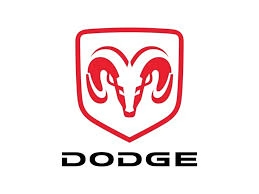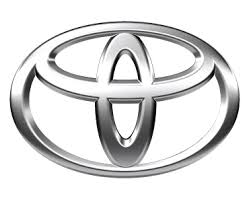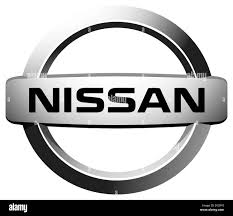How to Check Engine Light Codes Without a Scanner
Why the “Check Engine” Light Matters
Welcome to a world where you’re no longer at the mercy of professional mechanics whenever your car’s “check engine” light flickers. That tiny, ominous light is more than just an annoying distraction on your dashboard. It’s your car’s cry for help, a sign that something’s not right under the hood. Ignoring it might be tempting, but doing so could lead to costly repairs.
The High Cost of Professional Code Scanning
Now, let’s talk about the professional route one usually takes. While reliable, professional code scanning can leave you with a hefty bill. Mechanics possess the tools and knowledge to decipher these warning signals, but their expertise comes at a price, often inflating the overall repair bill.
The Appeal of DIY Methods
That’s where the lure of DIY methods comes in. You might wonder, “How can I check engine light codes without a scanner?”
Checking Codes Without a Scanner: It’s Simpler Than You Think
Well, you’d be surprised at just how simple it can be. No, you don’t need any expensive, complex equipment, nor do you need a mechanic’s certificate. With patience and the proper guidance, you can uncover the secrets your car is trying to tell you all by yourself. So buckle up and dive into the DIY engine light code-checking world.
Understanding OBD-II Codes
Your car, like all vehicles since 1996, is part of a universal system known as On-Board Diagnostics (OBD). This system, OBD-II, communicates with you through diagnostic codes, making you part of a community of car owners who understand when something’s not quite right with their vehicles.
What are OBD-II Codes?
OBD-II codes, Diagnostic Trouble Codes (DTC), or service engine light codes are codes your car’s OBD system uses to send a notification to you about an issue. Each time a fault occurs, the OBD-II system records the conditions under which the fault happened. This snapshot of information is stored in the system’s memory.
Decoding the Codes
Each OBD-II code corresponds to a specific fault detected in the car. The codes start with a letter that indicates the area of the vehicle where the fault occurred, such as ‘P’ for Powertrain, which includes the engine and gearbox. The following numbers define the specific fault.
The Extensive List of OBD-II Codes
It’s riddled with diagnostic trouble codes (DTCs), each indicating a distinct problem. These codes are recorded when a car’s sensor detects a reading that deviates from the anticipated or acceptable range. The initial digit of the DTC reveals whether the code is specific to the vehicle manufacturer or a generic code applicable to all OBD-II systems.
The last three numbers provide particular information about the system or circuit having an issue. Understanding these codes can help you diagnose problems with your vehicle, potentially saving you time and money on unnecessary repairs. So the next time your check engine light comes on, remember that it’s your car’s way of communicating with you. Understanding these codes is the first step in addressing the issue.
Methods for Checking Engine Light Codes Without a Scanner
The Paperclip Method (For older vehicles): If you have an older car, the paperclip method can be a handy way to check its engine light codes.
Here’s how you can do it:
- Locate the OBD-II port: The most common location for this port is under the driver’s side of the dash near the pedals. It’s usually a trapezoidal female 16-pin connector.
- Jump the pins with a paperclip: With the key off, jump the E1 and TE1 terminals in the underhood diagnostics box with a paperclip. Be sure the pins/paper clips are actually inside that female terminal.
- Read the flashing light codes: Turn the key to the ON position; do NOT start the engine. Count how many times the check engine light (CEL) blinks. For example, code 25 would be two flashes, a pause, then five flashes, repeat. It is how you count check engine light codes.
The Pedal Trick (For some vehicles)For some vehicles, you can use a specific sequence of pressing and releasing the gas and brake pedals to read the engine light codes:
Press and release the pedals. The exact sequence can vary depending on your vehicle’s make and model, so you may need to look up the specific sequence for your car.
Read the code from the odometer display:
After performing the pedal sequence, the code should display on your odometer.
Using a Smartphone App and Adapter
If you’re looking for a more modern approach, you can use a smartphone app and adapter to read your engine light codes:
- Connect a Bluetooth or Wi-Fi adapter to your phone: These adapters can be plugged into your car’s OBD-II port and wirelessly transmit data to an app.
- Use a diagnostic app: Many apps can read OBD-II codes. Some popular options include Torque Pro, OBD Auto Doctor, and Car Scanner ELM OBD2. These apps often provide additional diagnostic capabilities beyond just reading codes.
Brand-Specific Instructions
Methods for Checking Engine Light Codes Without a Scanner
The Paperclip Method (For older vehicles)
This method, typically older models, benefits vehicles that might not support the OBD-II diagnostic system. Here’s how you can do it:
- Locate the OBD-II port: The most common location for this port is under the driver’s side of the dash near the pedals. It’s usually a female 16-pin connector that is trapezoidal in shape.
- Jump the pins with a paperclip: With the car still in the off position, connect the two ports using the paperclip or jumper wire to create a closed circuit to your onboard diagnostic system.
Read the flashing light codes: Activate the ignition switch to the ON position without starting the engine (cranking the vehicle). Observe and record the pattern of flashes and pauses emitted by your check engine light to acquire the corresponding diagnostic trouble code (DTC).
For example, if the light blinks twice, pauses, and then blinks five more times, that would represent code 25.
Brand-Specific Instructions
Ford
- Locate the OBD-II port, typically found under the dashboard near the steering column.
- Pedal Trick: Turn the ignition key to the “ON” position without starting the engine. Press the gas pedal three times within five seconds.
- Read the Codes: The check engine light will start flashing the codes.
Chevy
- Locate the OBD-II port, Usually under the dashboard on the driver’s side.
- Pedal Trick: Turn the ignition key to the “ON” position without starting the engine. Press the gas pedal down and release it three times within five seconds.
- Read the Codes: The check engine light will flash the codes.
Dodge
- Locate the OBD-II port, which is found under the dashboard near the steering wheel.
- Pedal Trick: Turn the ignition key to the “ON” position without starting the engine. Press the gas pedal three times within ten seconds.
- Read the Codes: The check engine light will flash the codes.
Honda
- Locate the OBD-II port, Typically under the dashboard near the driver’s side.
- Pedal Trick: Turn the ignition key to the “ON” position without starting the engine. Press and hold the trip reset button, then turn the ignition key to the “OFF” position and back to “ON.”
- Read the Codes: The check engine light will flash the codes.
Toyota
- Locate the OBD-II port, Usually under the dashboard near the steering column.
- Pedal Trick: Turn the ignition key to the “ON” position without starting the engine. Press and hold the trip reset button, then turn the ignition key to the “OFF” position and back to “ON.”
- Read the Codes: The check engine light will flash the codes.
Hyundai
- Locate the OBD-II port, typically found under the dashboard near the driver’s side.
- Pedal Trick: Turn the ignition key to the “ON” position without starting the engine. Press the gas pedal down and release it three times within five seconds.
- Read the Codes: The check engine light will flash the codes.
Jeep
- Locate the OBD-II port, Usually under the dashboard near the steering column.
- Pedal Trick: Turn the ignition key to the “ON” position without starting the engine. Press the gas pedal three times within ten seconds.
- Read the Codes: The check engine light will flash the codes.
Nissan
- Locate the OBD-II port, Typically under the dashboard near the driver’s side.
- Pedal Trick: Turn the ignition key to the “ON” position without starting the engine. Press and hold the trip reset button, then turn the ignition key to the “OFF” position and back to “ON.”
- Read the Codes: The check engine light will flash the codes.
Using a Smartphone App and Adapter
If you’re looking for a more modern approach, you can use a smartphone app and adapter to read your engine light codes:
- Connect a Bluetooth or Wi-Fi adapter to your phone. These adapters can be plugged into your car’s OBD-II port and wirelessly transmit data to an app.
- Use a diagnostic app: Many apps can read OBD-II codes. Some popular options include Torque Pro, OBD Auto Doctor, and Car Scanner ELM OBD2. These apps often provide additional diagnostic capabilities beyond just reading codes.
Understanding how to check engine light codes can save you time and money by helping you diagnose problems with your vehicle yourself.
Interpreting Your Engine Light Codes
Using Online Resources
When your check engine light comes on, you must understand what your vehicle is trying to tell you. You don’t have to be a mechanic to interpret these codes. Plenty of online resources can help you decipher what’s going on under the hood.
Recommend Reputable Websites or Code Lookup Tools
First, let’s discuss where to find these resources. Reputable websites like OBD-Codes.com, AutoZone, and even your vehicle manufacturer’s official site can provide reliable information. These sites often have comprehensive databases of engine codes and their meanings.
Additionally, many automotive forums have active communities where you can get advice from experienced car owners and enthusiasts.
How to Search for Your Specific Code and Its Meaning
To search for your specific code, you’ll need to locate the code triggered by your vehicle. Once you have this code, you can enter it into the search bar of one of these trusted websites. For example, if your code is P0171, you would type “P0171 code meaning” into the search bar. The website will then provide detailed information about the code’s meaning and possible reasons for triggering it. Using these online resources, you can better understand what might be wrong with your vehicle.
This knowledge can help you decide whether to fix it yourself or visit a mechanic. Having this information at your fingertips makes you better prepared to handle any issues, saving you time and money. So, the next time your engine light comes on, don’t panic. Use these online resources to decode the message and take control of your car’s health.
When to Seek Professional Help
Serious Engine Codes: When DIY is Not Enough Some engine codes signal major problems, such as powertrain, emissions, or temperature issues. Ignoring these could lead to expensive repairs or safety risks.
Get Professional Help If:
-
DIY fixes don’t work
-
If you need clarification on the code, Mechanics have the tools and expertise to diagnose and fix complex issues, saving you time and money in the long run.
FAQ’s about “How to Check Engine Light Codes Without a Scanner”
Can I clear engine light codes myself?
Indeed, you, as a car owner, have the power to clear engine light codes using an OBD-II scanner or even through the methods mentioned in this article (like the pedal trick). This action, however, only clears the code, not the underlying issue. If the problem persists, the light will return, but the fact that you can take this step is a testament to your capability and control over your vehicle.
Is it safe to drive with the check engine light on?
- It depends. A steady check engine light may indicate a minor problem, while a flashing light signals a serious issue requiring immediate attention. If the light is flashing or you notice performance issues, consult a mechanic immediately.
How often should I check engine light codes?
- You should check the code as soon as the light comes on. Please don’t ignore it, as it could lead to more severe problems.
Why is my check engine light on?
- There are numerous reasons, from a loose gas cap to a faulty catalytic converter. The specific code will help you identify the problem.



